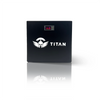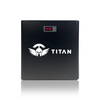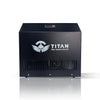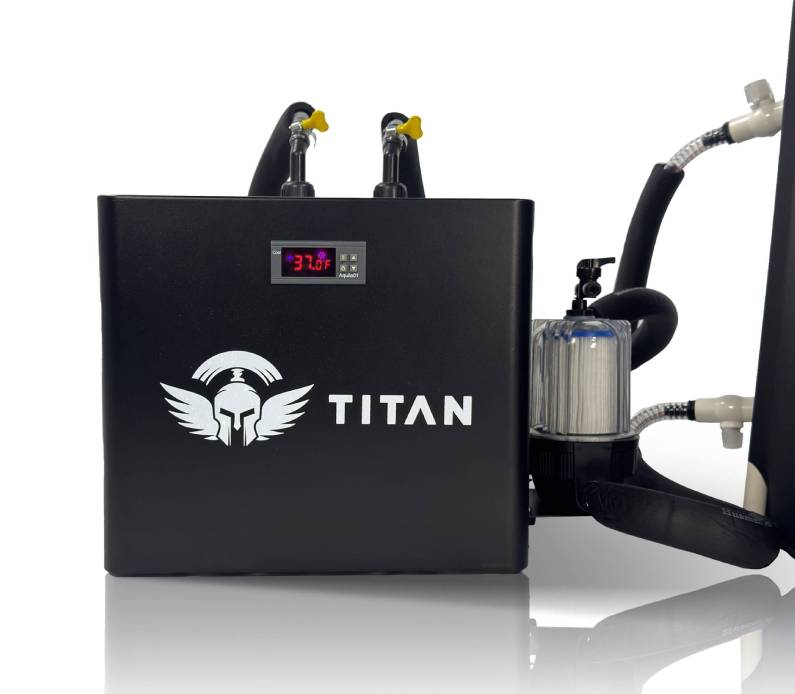
Starting with cold therapy through cold plunging can change your life for the better. It brings many health benefits. But, it also has its own challenges and mistakes to watch out for.
Even those who get used to it might keep making ineffective methods without knowing. Knowing the common cold plunge mistakes is key to getting the most out of cold plunging benefits.
This article will help you understand these mistakes. It will also show you how to avoid them. This way, you can enjoy a safe and rewarding cold plunging experience.
Key Takeaways
- Understanding the common pitfalls in cold plunging.
- Learning how to avoid mistakes for a safer practice.
- Discovering the full range of cold plunging benefits.
- Implementing effective cold therapy techniques.
- Avoiding overexertion and listening to your body.
The Most Common Cold Plunge Mistakes and Their Solutions
Cold plunging is rewarding but comes with challenges, like rushing into it without preparation. The journey to becoming a cold plunge enthusiast is often marred by avoidable mistakes.
Gradually Increasing Cold Exposure
Starting with water that's too cold is a big mistake for beginners. Unless you're already used to it, start with temperatures between 50-60 degrees. This lets your body get used to the cold slowly.
Gradual exposure is key. By dropping the temperature by just one degree every week, you can build up your tolerance. Aim to stay in the cold plunge for at least 2 minutes. This slow increase helps avoid shock and makes the experience more sustainable.
Other mistakes include staying in too long, and not being consistent. To avoid these, control your breathing and start with manageable sessions. Fully submerging your body is also important for the best benefits.
- Start with temperatures between 50-60 degrees.
- Decrease the temperature by one degree weekly.
- Aim to stay in the cold plunge for at least 2 minutes.
- Practice controlled breathing to enhance your experience.
- Ensure full body submersion for optimal benefits.
By understanding and avoiding these common cold plunge mistakes, you can make your experience safer and more effective. Consistency and gradual progression are key to a successful cold plunge practice.
Equipment and Setup Errors to Avoid
Getting the right equipment is key for safe and effective cold plunging. Many places offer ice baths, but having your own is often better and cheaper.
A cold plunge tub is a big investment for cold therapy fans. There are many options, from simple DIY setups to fancy, commercial models. These can have features like temperature control and apps for monitoring.
Considerations for DIY Cold Plunge Setups
For DIY setups, safety and effectiveness are top priorities. Temperature control is essential. The best temperature for cold plunging is between 50°F to 55°F (10°C to 13°C).
Safety features are also critical. Your DIY setup should keep the water at the right temperature and clean. It's also important to have a safe way to get in and out of the tub.
| Feature | DIY Setup | Commercial Cold Plunge Tub |
|---|---|---|
| Temperature Control | Manual addition of ice or use of a chiller unit | Advanced digital temperature control |
| Safety Features | Manual checking, basic filtration | Advanced filtration, sanitation systems, and safety alarms |
| Cost | Variable, potentially lower upfront cost | Higher upfront cost, potentially lower long-term maintenance |
Choosing between DIY and a commercial cold plunge tub depends on your needs. Make sure your equipment is safe, effective, and right for you. Avoiding common mistakes will help you enjoy cold plunging safely.
Temperature Management Mistakes
Cold plunging needs careful thought about water temperature. This is key to get the most benefits and avoid risks. The right temperature can make your cold plunge session effective.
One big worry is avoiding extreme temperatures. Extreme cold can be dangerous, leading to hypothermia. Water that's too warm won't give you the cold therapy benefits you want.
Avoiding Extreme Temperatures
For newbies, start with water between 50°F and 59°F. This lets your body get used to the cold without extreme reactions. Gradual adjustment is important; starting too cold can be bad.
- Begin with temperatures around 55°F for your first few sessions.
- Gradually decrease the temperature as your body adapts.
- Monitor your body's response and adjust as needed.
Don't start with water below 40°F for your first session. Such cold can shock your system and might make you stop. Instead, slowly get used to colder water, letting your body adapt well.
Effective temperature management boosts cold plunging benefits. You'll see better circulation, more energy, and clearer thinking. The right temperature makes your cold plunge safe and beneficial.
Breathing and Mental Preparation Failures
Breathing techniques and mental preparation are key to a great cold plunge experience. Learning to control your breath is vital. It helps slow down your breathing, making the cold plunge easier and more beneficial.
Box breathing is a great way to control your breathing in cold water. You breathe in for four counts, hold for four, breathe out for four, and hold again for four. This "box" shape with your breath calms your nervous system.
Mental Preparation Techniques for Cold Plunging
Mental preparation is just as important as breathing control. It keeps you focused and calm during the plunge. Meditation and visualization are very effective. Meditation builds mental strength, and visualization prepares your mind for success.
- Meditation: Regular meditation lowers stress and anxiety. It makes handling cold plunging stress easier.
- Visualization: Imagining yourself successfully completing a cold plunge boosts confidence and mental readiness.
Using breathing techniques and mental preparation together greatly improves your cold plunge experience. This approach not only makes the plunge more comfortable but also increases its benefits. Benefits include less inflammation and better mental clarity.
Timing and Frequency Errors
The success of cold plunging depends on when and how often you do it. Being consistent is important for benefits like better recovery, clearer mind, and overall health.
Research shows that cold exposure gets better with regular practice. So, it's vital to have a routine you can follow. Challenge yourself by trying to plunge every day.
Timing Cold Plunges for Optimal Benefits
Getting the timing right can greatly improve the benefits. Morning plunges can energize you for the day. After a workout, it helps with recovery by reducing muscle soreness.
Consider the following when planning your cold plunge routine:
- Your schedule and lifestyle
- The time of day that works best for you
- Your physical and mental state before and after plunging
| Timing | Benefits | Considerations |
|---|---|---|
| Morning | Invigorating, sets a positive tone for the day | Can be challenging for those not used to early morning routines |
| Post-Workout | Aids in recovery, reduces muscle inflammation | Ensure you're not plunging when excessively tired or dehydrated |
| Before Bed | Can help with sleep quality | May not be suitable for everyone, as it can be stimulating |
Choosing the right timing and frequency for your cold plunges can enhance benefits and reduce risks. Consistency is key. Find a routine that fits your life and stick to it.
Post-Plunge Recovery Mistakes
Effective post-plunge recovery techniques can make cold plunging better and safer. One big mistake is not warming up naturally after being in cold water.
Jumping into a hot shower or sauna right after can undo some benefits. For example, it can increase inflammation. Instead, let your body warm up slowly by getting dressed or doing light exercise.
Rehydrating and Refueling After Cold Plunging
Rehydrating and refueling are key after a cold plunge. The body loses water and nutrients. It's important to replace these to keep your body working well.
- Drink water or a hydration drink to replace lost fluids.
- Eat a balanced snack or meal with proteins, carbs, and fats within 30-60 minutes after.
A good recovery plan can really boost the benefits of cold plunging. Here's a simple guide for rehydrating and refueling:
| Recovery Step | Action | Timing |
|---|---|---|
| Rehydration | Drink water or hydration drink | Immediately after plunge |
| Refueling | Consume balanced snack/meal | Within 30-60 minutes |
| Warming Up | Gradually warm up | After getting out of the plunge |
By using these recovery steps, you can get the most out of cold plunging and avoid risks. Remember, recovery is just as important as the plunge itself.
Conclusion: Creating a Sustainable Cold Plunge Practice
To get the most out of cold therapy, being consistent is essential. Finding a routine that fits your life is key for lasting success. By avoiding common mistakes and adding tips to your daily routine, you can make cold plunging a lasting habit.
A lasting cold plunge practice means starting slow, recovering well, and sticking to a schedule. Begin with short, gentle plunges and gradually increase time and frequency. This way, you build up your body's ability to handle cold and achieve lasting benefits.
By following the advice in this article, you can make a cold plunging routine that's both effective and fun. With a thoughtful plan, you can unlock the full benefits of cold therapy. This leads to a practice that boosts your health and well-being in the long run.
FAQ
What is cold plunging, and how does it work?
Cold plunging means putting your body in cold water. It helps improve your mental focus, eases muscle pain, and boosts your health.
What are the benefits of cold plunging?
It sharpens your mind, eases muscle pain, boosts blood flow, and aids in physical and mental recovery.
How can I avoid common cold plunge mistakes?
Start with warmer water, breathe correctly, fully submerge, and stick to a routine to avoid mistakes.
What type of cold plunge tub is best for me?
The best tub depends on what you like, your budget, and how much space you have. Look at temperature control, safety, and durability.
How often should I cold plunge?
Be consistent. Try to plunge at the same time every day or week. Adjust based on your needs and goals.
What are the best post-plunge recovery techniques?
Warm up, drink plenty of water, and eat nutrient-rich foods to help your body recover and get the most from plunging.
How can I maintain a sustainable cold plunge practice?
Stay consistent, gradually get colder, and focus on recovery to keep up a good practice and see lasting benefits.


 30-Day Hassle-Free Returns
30-Day Hassle-Free Returns





